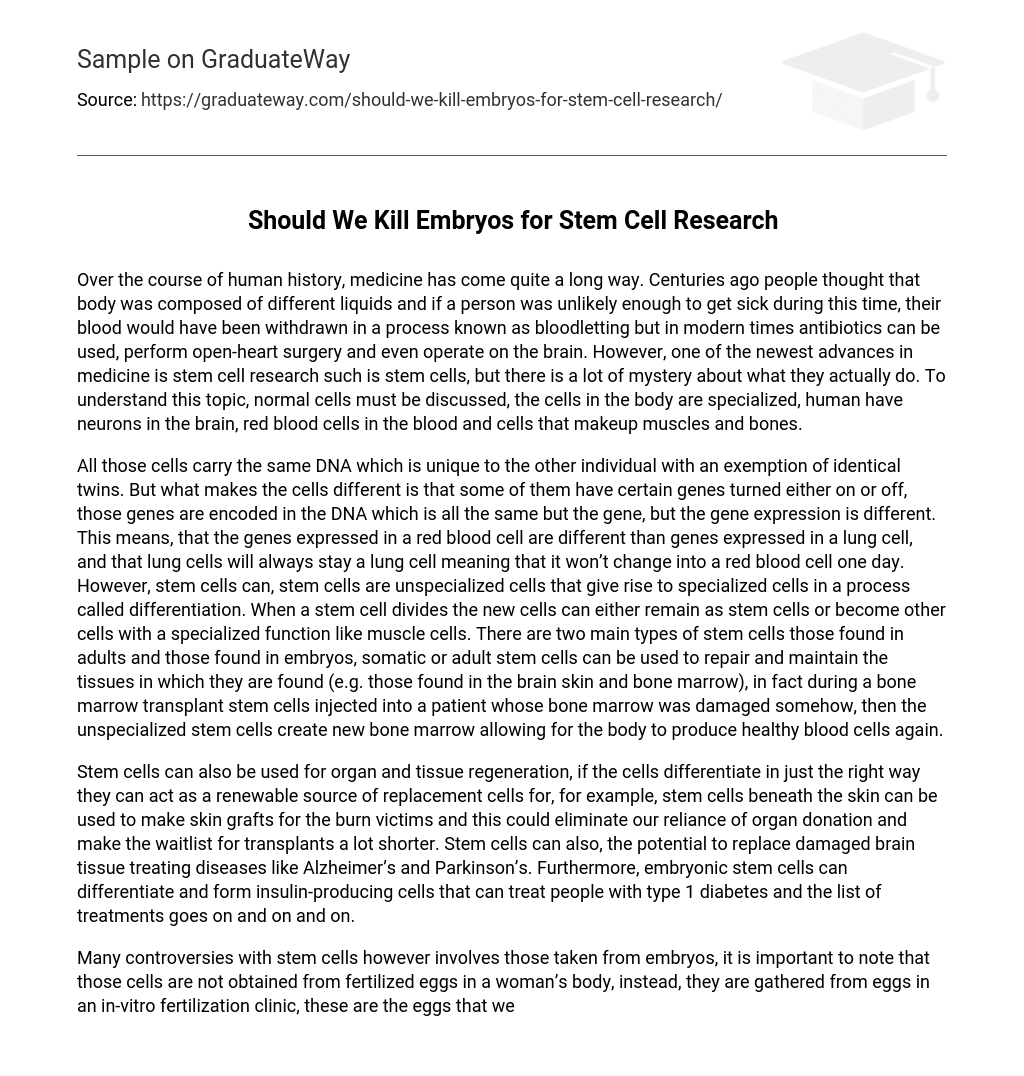Over the course of human history, medicine has come quite a long way. Centuries ago people thought that body was composed of different liquids and if a person was unlikely enough to get sick during this time, their blood would have been withdrawn in a process known as bloodletting but in modern times antibiotics can be used, perform open-heart surgery and even operate on the brain. However, one of the newest advances in medicine is stem cell research such is stem cells, but there is a lot of mystery about what they actually do. To understand this topic, normal cells must be discussed, the cells in the body are specialized, human have neurons in the brain, red blood cells in the blood and cells that makeup muscles and bones.
All those cells carry the same DNA which is unique to the other individual with an exemption of identical twins. But what makes the cells different is that some of them have certain genes turned either on or off, those genes are encoded in the DNA which is all the same but the gene, but the gene expression is different. This means, that the genes expressed in a red blood cell are different than genes expressed in a lung cell, and that lung cells will always stay a lung cell meaning that it won’t change into a red blood cell one day. However, stem cells can, stem cells are unspecialized cells that give rise to specialized cells in a process called differentiation. When a stem cell divides the new cells can either remain as stem cells or become other cells with a specialized function like muscle cells. There are two main types of stem cells those found in adults and those found in embryos, somatic or adult stem cells can be used to repair and maintain the tissues in which they are found (e.g. those found in the brain skin and bone marrow), in fact during a bone marrow transplant stem cells injected into a patient whose bone marrow was damaged somehow, then the unspecialized stem cells create new bone marrow allowing for the body to produce healthy blood cells again.
Stem cells can also be used for organ and tissue regeneration, if the cells differentiate in just the right way they can act as a renewable source of replacement cells for, for example, stem cells beneath the skin can be used to make skin grafts for the burn victims and this could eliminate our reliance of organ donation and make the waitlist for transplants a lot shorter. Stem cells can also, the potential to replace damaged brain tissue treating diseases like Alzheimer’s and Parkinson’s. Furthermore, embryonic stem cells can differentiate and form insulin-producing cells that can treat people with type 1 diabetes and the list of treatments goes on and on and on.
Many controversies with stem cells however involves those taken from embryos, it is important to note that those cells are not obtained from fertilized eggs in a woman’s body, instead, they are gathered from eggs in an in-vitro fertilization clinic, these are the eggs that were not implanted in a mother’s uterus and will willingly donate from research purposes but this raises a question whether or not a life was destroyed in the process which ultimately leads to the debate. The use of stem cells is seemingly endless, and humanity came a long way sins our humble beginnings and hopefully it will continue to advance.





